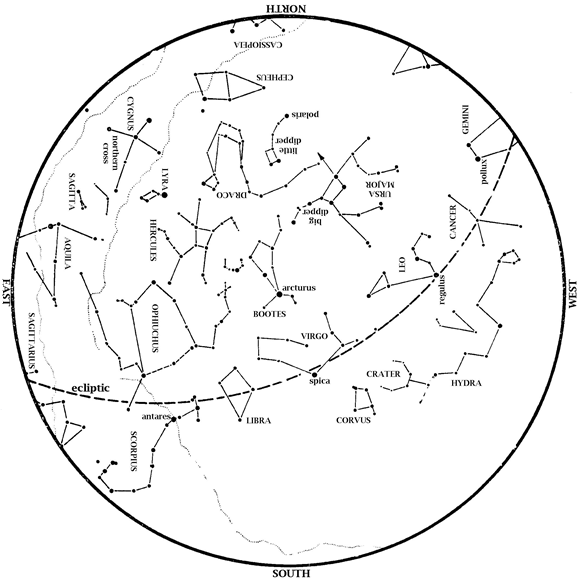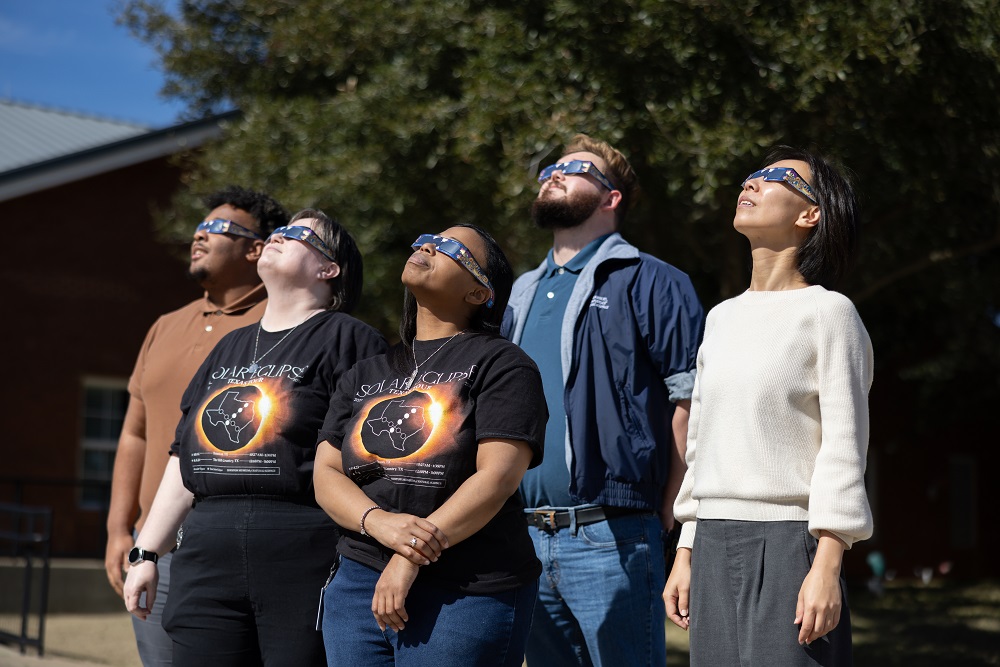Venus remains in the morning sky this month. Venus outshines everything except the Sun and the Moon, so you can try to find it low in the southeast at dawn. Venus remains a ‘morning star’ for most of 2022.
Mars is low the morning sky this month. Look low in the southeast at dawn, to the lower right of Venus. Starting mid-month, Venus begins to pull away from Mars; Mars appears directly to the right of (and farther from) Venus by the end of the month.
Saturn is now low in the southeast before dawn. Saturn appears slightly higher each morning as Venus and Mars approach it. Venus passes Saturn March 28-29, while Mars does so April 5.
Jupiter is behind the Sun on March 5, and out of sight for us this month.

Brilliant winter stars shift towards the southwest during March. Dazzling Orion is almost due south at dusk. His three-starred belt is halfway between reddish Betelgeuse and bluish Rigel. Orion’s belt points up to Aldebaran in Taurus the Bull. To Orion’s upper left are the twin stars Castor and Pollux, marking the heads of Gemini, the Twins. You can find Sirius, the brightest star we ever see at night, by drawing a line from Orion’s belt towards the horizon. To Orion’s left, about level with Betelgeuse, is Procyon, the Little Dog Star.
From Sirius, look a little bit to the right and then straight down to the horizon. If your southern horizon is clear of clouds and tall earthly obstacles, you’ll see Canopus, the second brightest star ever visible at night. This star is so far south that most Americans never see it and many star maps made in the USA omit it. (You must be south of 37 degrees north—the latitude of the USA’s Four Corners—for Canopus to rise). As you view Canopus, keep in mind that the sky we see depends on our latitude as well as on time of year and time of night.
Joining the winter stars are stars of spring rising in the east. Look for Leo, the Lion at dusk. Later in the evening, extend the Big Dipper’s handle to ‘Arc to Arcturus’ and then ‘speed on to Spica’; these stars rise at about 10:00 in early March but by 9pm on the 31st.

Taurus, the Bull, is now high in the west. Dazzling Orion, the Hunter is high in the southwest, with his two dogs behind him. Sirius, the Big Dog Star, is the brightest star we ever see at night. Look for Canopus on the southern horizon below Sirius. In the north, the Big Dipper is higher in the sky. Leo, the Lion, and Virgo, the Virgin, rise in the east. These stars, along with Arcturus, announce the coming spring.
Moon Phases in March 2022:
New March 2, 11:34 a.m.
1st Quarter March 10, 4:45 a.m.
Full March 18, 2:17 a.m.
Last Quarter March 25, 12:37 a.m.
Sunday, March 13, is the second Sunday of March. Accordingly, Daylight Saving Time begins at 2:00 am on this date. (The time jumps from 1:59 am to 3:00, skipping the 2:00 hour). Don’t forget to set your clocks forward one hour Saturday night, March 12!
At 10:33 am on Sunday, March 20, the Sun appears directly overhead at the equator, shifting northwards. Thus, this is our spring equinox, a day when everyone in the world gets the same amount of daylight. This is also when daytime, which has been lengthening since the winter solstice, becomes longer than night. Below the equator, of course, the reverse is true. There daytime has been shortening since late December and becomes shorter than night at the equinox. Autumn, rather than spring, is underway.
Clear Skies!
Look back at the February 2022 Sky Happenings.
Interested in seeing the stars in-person with astronomical experts? Visit the George Observatory! Check available times here.






